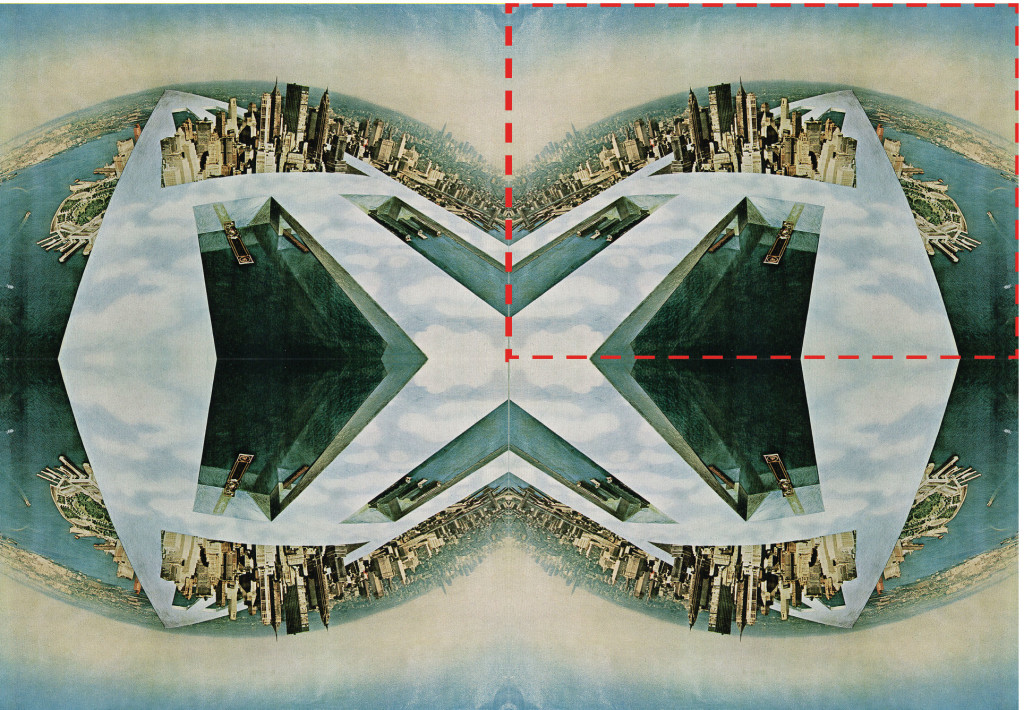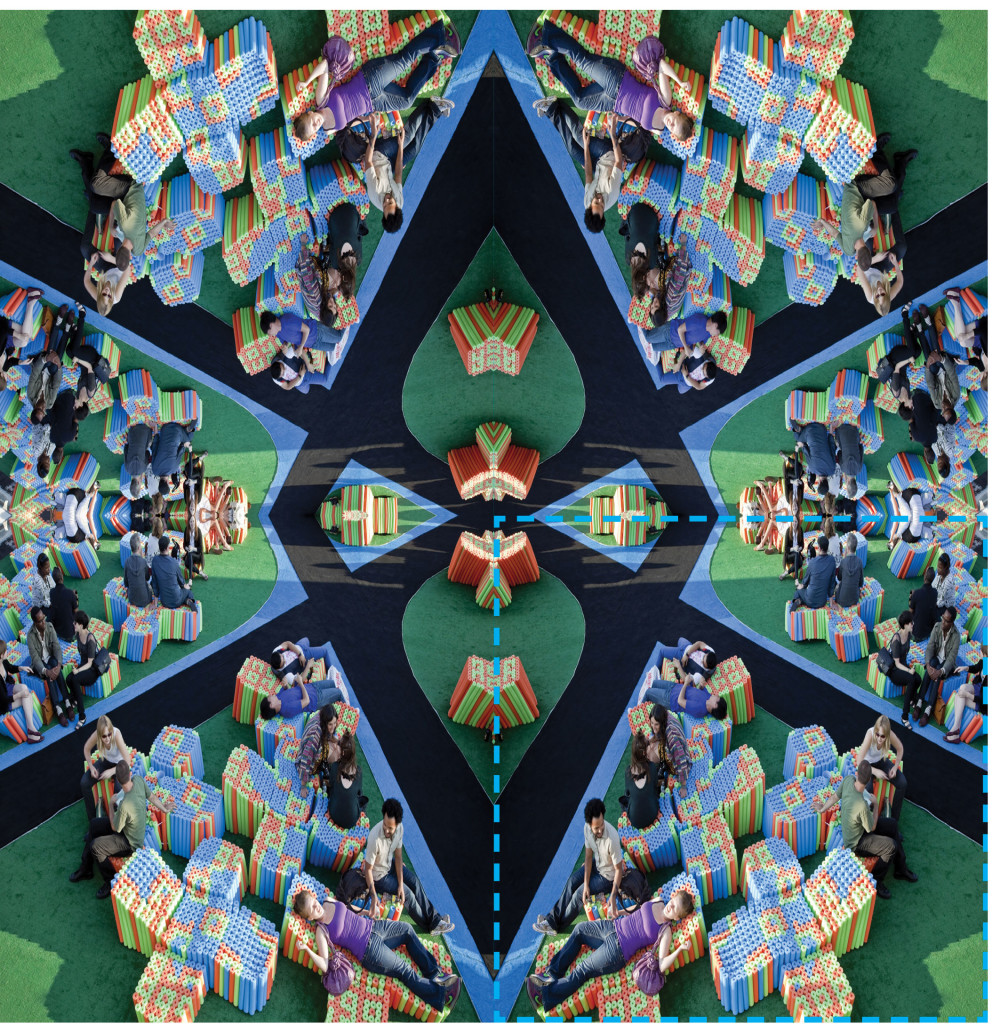alejandro zaera-polo | strategies of explications

text by Federico Giacomarra
It’s been almost ten years since the release in November 2003 of the famous book “Phylogenesis“ by Foreign Offices Architects, of Alejandro Zaera Polo and Farshid Moussavi, a book deeply studied from the content to the graphic layout, summary of ten years of professional activity.
Many things have happened since then, the completion of the South East Costal Park in Barcelona, the achievement of the Spanish Pavilion at the 2005 Expo in Japan, the design of the Future City exhibition at the Barbican in London in 2006, The Municipal Theatre and Auditorium in Torrevieja, the Carabanchel Social Housing, the John Lewis Department Store and so many other beautiful projects and achievements that will leave you breathless.
But the news that left us speechless was the closure of the office in 2009 and the subsequent opening of two separate offices AZPML and FMA.
yes because (without being too specific), among us students of architecture the FOA were a bit like a famous band, a bit ‘ like the Beatles, capable of nailing a guitar riff or a jingle and making it a worldwide hit (remember the Yokohama Airport ?) and a bit like Fred and Ginger, bringing a message of renewal in the perfect blend of theory and practice.
What is striking when looking at their portfolio from that date onwards, is how both offices have maintained such high standards of design and theoretical research in spite of the turbulence.
In particular, amongst the works of Alejandro, recently associated with Maider Llaguno (former architect of FOA), appear very interesting projects : like the Palazzo del Cinema of Locarno, and the Saint Martins Library, both in Italy.
The first is a project that is in contrast with the tendency of a formally exasperated architecture, it communicates with its environment through very simple elements, frames and games of light, the second has a strong global nature (global as the nature of knowledge contained in a library) with local accents in the research of materials and references used.
What in FOA was a research on coherence of language and surveys on compositional possibilities and program, in AZPML becomes a research about the sense of architecture in the contest of a cultural and economic crisis.
In 2008 the current research scenario of the study could already be anticipated: in 2008 he began a master class at the Berlage entitled “The politics of the envelope ”, almost simultaneously the omonimous article is released in the issue 17 of Volume.
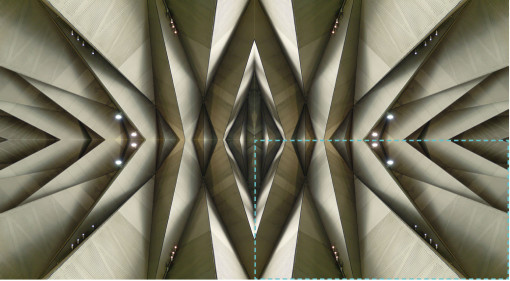
A few years later we find him presenting his “new” research at Syracuse University.
In the text as during the lecture, the key-words pronounced with attention bring us to a precise semantic universe : Alejandro retrieves the theoretical horizon of the formation period: Henri Lefebvre and David Harvey, Bruno Latour and Sloterdijk.
The right to the city as a place of expression and creativity, a citizen that takes part in the political life of the city as he himself is a promoter of transformation and a political force (that transforms himself in order to transform the city and vice versa), an architecture whose role is to communicate such transformations, to explain the latent political forces, this is the foundation of a new politicization based on unveiling and transparency, to explain is to unroll… And no place is better suited for this than the surface of a building, its shell, the mysterious place where the eternal struggle between all dichotomies, architectural and not, takes place. In his text Alejandro invokes several times the need for a general theory of the shell, which would also take the environmental issues into account: he refers to a classical definition in terms of energy performance to define four types of buildings (based on the relationship between the surface of the shell and the volume,the S/V ratio): flat horizontal, flat vertical, spherical and vertical.
Each type has its strategies to mediate between the inside and the outside, as in the relationship between natural and artificial, between thermal gains and losses, (forcing a little perhaps) he introduces categorizations typical of the operating method of the FOA period, each type expresses the political context in which it is immersed in a different way (the example of the U.S. embassies that depending on the relation with the hosting country have different ways of dealing with the surrounding ground).
We may be at the dawn of a new project of historical criticism, that brings attention to those that are political and ecological aspects of the architectural practice at the time of the so-called “sustainability.” The risk is, as always, like in every discussion you are going to start, that the premises are wrong.
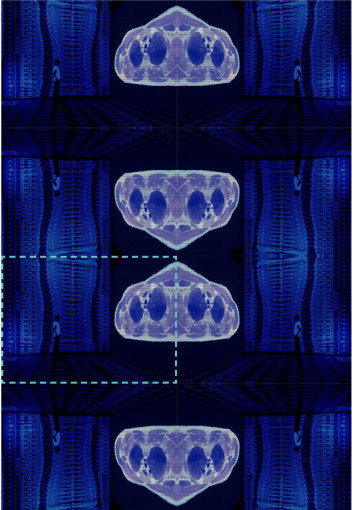
We should take a step back, if it is true that the best theory is the one that has yet to materialize and that every architectural criticism fades at the time of execution: to build is to somehow deal with the political forces, taking part in what is the mechanism of maintaining the status – quo. For example, when Zaera Polo talks about the concept of the “limit” in architecture, he states that it is coming to have (again) an increasing importance in the global debate of today about environmental issues, but at the same time he fails to explain the profound contradiction of the combination of words sustainable and development (Is there a limit to economic growth and resource exploitation ?)… An obvious omission, especially if you enhance the fantastic potential in terms of working opportunities in the global maket, 95 % of works built in the world are not made by architects.
But then, we know that taking part is the only way to avoid falling into indifference, to quote Gramsci (in a pseudo- deidealized era, like the Italian one) “to live means to be a partisan “. We might as well arm ourselves with strong powers of observation and ability to mediate the conflicts, including the most difficult ones.
The Spanish architect, not unreasonably, according to many, one of the few architects around able to support a practice and a theory in strong synergy (recently nominated Dean of the Faculty of Architecture at Columbia University), one of the few capable of supporting theories always based on the sharp observation of reality, as strong as soft : as the concept of explication, opposite to that of the revolution (a constant evolution), the shell as a possible place of explication of conflicts and the need of a new politicization of society such as the ability to participate in the mechanisms of urban transformation.
To salute him paying homage, we will use the now famous and never cloying excerpt from “Future City” by Gramsci, “The indifferents,” that decontextualized from the ideological struggles of the time that reveals all his strength :
“Indifference is the dead weight of history. It is the millstone around the innovator’s neck; the inert matter in which the brightest enthusiasms are drowned; the swamp that surrounds the old city and defends it better than its strongest walls, better than the valour of its warriors, because it swallows the assailants within its murky vortices, it decimates them, it disheartens them, and sometimes it makes them desist from the heroic deed.“ A.Gramsci, 1917
ITALIAN VERSION _____________________________________________
Sono passati quasi 10 dall’uscita nel Novembre 2003 del famoso libro “Phylogenesis” dei Foreign Offices Architects, composti da Alejandro Zaera Polo e Farshid Moussavi.
Di cose da allora ne sono accadute, il completamento del South East Costal Park a Barcellona, la realizzazione del padiglione spagnolo all’ Expo 2005 in Giappone, la progettazione della mostra Future City al Barbican di Londra nel 2006, Il Teatro e Auditorium Municipale di Torrevieja, il Carabanchel Social Housing, il John Lewis Department Store e cosi tanti altri bei progetti e realizzazioni da stuccare il fiato.
Ma di sicuro la notizia che più ci ha lasciato a bocca aperta è stata quella della chiusura dello studio nel 2009, e la conseguente apertura di due studi separati AZPML e FMA, si perché, senza entrare troppo in merito alla faccenda, i FOA erano un po’ come un gruppo famoso fra noi studenti di archiettura, un po’ come i Beatles, capaci di azzeccare un riff di chitarra o un ritornello e farne un successo mondiale (vi ricordate lo Yokohama Airport ??)e un po’ come Fred e Ginger, portatori di un messaggio di rinnovamento nella fusione perfetta fra teoria e pratica.
Quello che colpisce osservando il portfolio dei loro lavori da quella data in poi, è come entrambi gli studi abbiano mantenuto degli standard cosi’ alti di progettazione e ricerca teorica nonostante la turbolenza.
In particolare fra i lavori di Alejandro, recentemente associatosi con Maider Llaguno (precedentemente architetto del team dei FOA), appaiono progetti davvero interessanti: come il Palazzo del Cinema di Locarno o la biblioteca Saint. Martins, entrambi in Italia.
Il primo è un progetto che si contrappone con decisione ad un architettura formalmente esasperata, che comunica con il proprio contesto attraverso elementi molto sobri, frame e giochi di luce, il secondo un progetto di natura globale, come globale è la natura della conoscenza contenuta in una biblioteca, con accenti locali nella ricerca dei materiali e dei riferimenti linguistici.
Tutto quello che nei FOA era una ricerca di coerenza linguistica e indagini sulle possibilità compositive e di programma, in AZPML diventa ricerca sul senso dell’architerrura in un contesto culturale ed economico in crisi.
Già nel 2008 si prefigurava l’attuale scenario di ricerca dello studio: nel 2008 inizia una masterclass al Berlage dal titolo “Le politiche dell’ involucro”, quasi contemporaneamente esce l’omonimo articolo sul numero 17 di Volume.
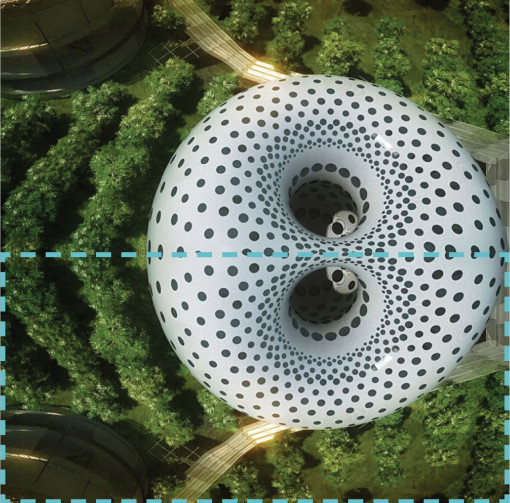
Qualche anno dopo lo troviamo presentare il suo “nuovo” indirizzo di ricerca alla Syracuse University.
Nel testo come durante la lecture, le parole chiave pronunciate con attenzione rimandandano ad universo semantico ben preciso: Alejandro recupera l’orizzonte teorico del periodo della formazione, Henri Lefebvre e David Harvey, Sloterdijk e Bruno Latour.
Il diritto alla città come luogo di espressione e creatività,un cittadino che prende parte alla vita politica essendo egli stesso promotore di trasfomazione e forza politica (trasformare se stessi per trasformare la città e viceversa), un architettura il cui ruolo sia quello di comunicare tali trasformazioni, di esplicitare le forze politiche latenti, ecco il fondamento di una nuova politica basata sullo svelamento e sulla trasparenza, esplicitare come spiegare…nessuno luogo è più adatto per questo che la superficie di un edificio, il suo involucro, luogo misterioso dove si svolge l’eterna lotta fra le tutte le dicotomie, architettoniche e non.
Alejandro invoca più volte nel suo testo la necessità di una teoria generale dell’ involucro, che tenga conto anche di quelle che sono le problematiche ambientali: si rifà a quella che è una classica definizione in termini di prestazione energetica per definire quattro tipologie di involucro in base alla relazione fra superficie dell’ involucro e massa contenuta.
Piatto orizzontale, piatto verticale, sferico e verticale.
Ogni tipologia ha sue strategie di mediazione fra interno ed esterno, come nel rapporto fra naturale e artificiale e fra guadagni e dispersioni terimche, forzando un po’ la mano forse, introduce categorizzazioni tipiche del metodo operativo del periodo FOA (la filogenesi ed evoluzione dei tipi di superficie sulla base dei processi a cui sottoporle, superfici piegate,biforcate,bucate,continue,etc…), ogni tipologia esplicita in maniera diversa le forze politiche in cui è “immersa” (l’esempio delle ambasciate americane che a seconda dei rapporti col paese ospite hanno una relazione col terreno attorno di un certo tipo).
Potremmo essere agli albori un nuovo progetto di critica storica, che riporti l’attenzione su quelli che sono gli aspetti politici ed ecologici della pratica architettonica, al tempo della cosidettà “sostenibilità”. Il rischio è come sempre in ogni discorso che si sta per iniziare, che le premesse non siano corrette.
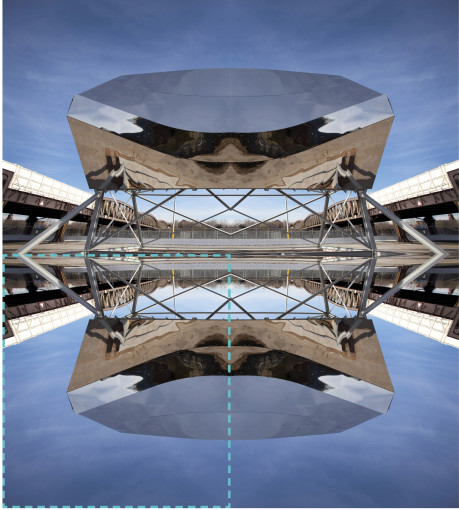
Occorrerebbe forse, fare un passo indietro, se è vero che la teoria migliore è quella che ancora deve arrivare e che ogni critica architettonica sfuma al momento della realizzazione: costruire in qualche modo è venire a patti con le forze politiche, prendendo parte a quello che è il meccanismo di mantenimento dello status-quo. Lo dimostra,ad esempio,lo stesso Zaera Polo quando parlando del concetto di “limite” in architettura, (sempre ne “Le politiche dell’involucro”) afferma che esso stia tornando ad avere sempre maggiore importanza nel contesto globale odierno sotto tutti i punti di vista, ma allo stesso tempo omette di esplicitare la profonda contraddizione dell’accostamento della parola sviluppo e sostenibile…C’è un limite alla crescita economica e allo sfruttamento di risorse??… Omissione ovvia, specialmente se si esalta la fantastica potenzialità a livello di opportunità in quel 95% di opere costruite al mondo e non di competenza degli architetti.
Ma d’altronde, sappiamo bene che prendere parte è l’unico modo di non cadere nell’indifferenza, come scriveva Gramsci (in un ottica pseudo-deideologizzata come quella italiana) “vivere vuol dire essere partigiani”…tanto vale armarsi di forte spirito di osservazione e capacità di mediare i conflitti, anche quelli più difficili.
L’architetto spagnolo, non torto a detta di molti, uno dei pochi architetti in giro in grado di sostenere una pratica e una teoria in forte sinergia (nominato recentemente Preside della Facoltà di Architettura alla Columbia University), uno dei pochi in grado di sostenere teorie, basate sempre su un’acuta osservazione della realtà, tanto forti quanto morbide: come il concetto di esplicitazione, opposto a quello di rivoluzione, come costante evoluzione, l’involucro come possibile luogo di esplicitazione dei conflitti, e la necessità di una nuova politicizzazione della società come capacità di prendere parte ai meccanismi di trasformazione urbana.
Per rendergli omaggio lo salutiamo con l’ormai famoso, ma mai stucchevole celebre passo tratto dalla “Città Futura” di Gramsci, “Gli indifferenti”,passo che decontestualizzato dalle lotte ideologiche dell’epoca rivela tutta la sua forza:
“L’indifferenza è il peso morto della storia. É la palla di piombo per il novatore, è la materia inerte in cui affogano spesso gli entusiasmi più splendenti, è la palude che recinge la vecchia città e la difende meglio delle mura più salde, meglio dei petti dei suoi guerrieri, perché inghiottisce nei suoi gorghi limosi gli assalitori, e li decima e li scora e qualche volta li fa desistere dall’impresa eroica.“ A.Gramsci,1917.
Related Posts :
Category: Article
Views: 3682 Likes: 0
Tags: alejandro zaera polo , azpa , Federico Giacomarra , Sick & Wonder
Comments:
Info:
Info:
Title: alejandro zaera-polo | strategies of explications
Time: 20 settembre 2013
Category: Article
Views: 3682 Likes: 0
Tags: alejandro zaera polo , azpa , Federico Giacomarra , Sick & Wonder

